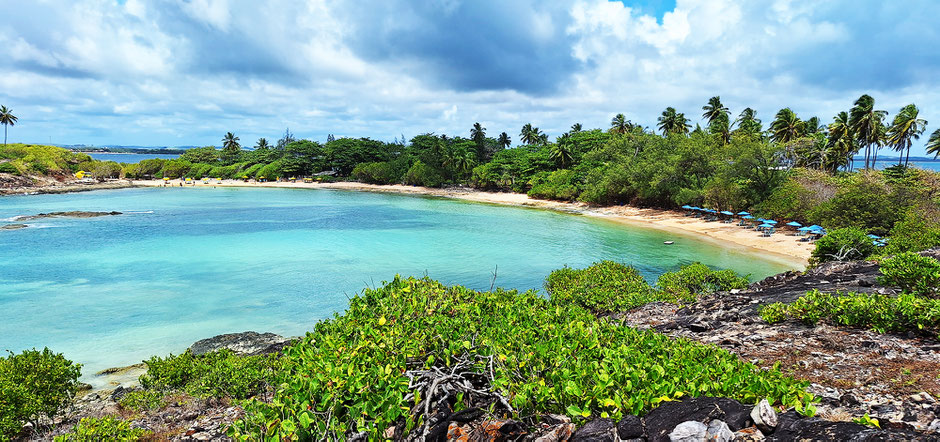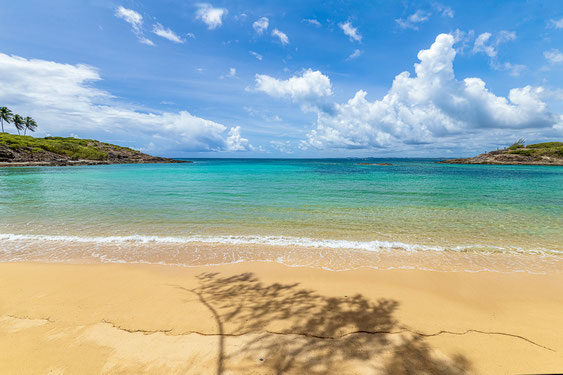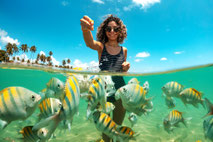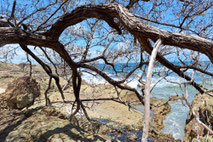Santo Aleixo Island - The Hidden Paradise
The island of Santo Aleixo, a jewel on the coast of Brazil

Santo Aleixo Island, with its volcanic origin, is a paradise that impresses not only with its beautiful beaches. The abundance of flora and fauna in perfect harmony with the island's wildlife is also impressive. The vision of those wishing to explore a peaceful place is fulfilled in the natural beauty with crystal-clear waters, white beaches and lush vegetation. The rock formations and a breathtaking underwater world are impressive.
A pirate island in the waters of Pernambuco
The island of Santo Aleixo is 30.49 hectares in size. It is located two kilometres from Barra de Sirinhaém and 70 km from Recife. Its shape resembles a horseshoe. It is the only coastal island in
the sea between Bahia and Maranhão.
To the west, there is a white sandy beach that is ideal for swimming.
To the south, a volcanic crater-shaped lagoon opens up. Protected by rocks, it contains a large natural seawater pool with living coral reefs in calm, warm, crystal-clear water. The perfect place
to let your soul dangle.
There is a rocky shore to the east. At high tide, the high waves from the open sea crash with full force against the volcanic rocks.
The history of the island of Santo Aleixo is full of episodes of invasions and disputes
The island has witnessed many stories that go back centuries. Since the 16th century, episodes shaped colonial Brazil. Spanish and Portuguese navigators explored the area in search of new sea
routes and riches.
The first mention of this dates from 1527. The Spanish navigator Rodrigo Acuña was shipwrecked off the coast of Pernambuco. He and some of his companions landed on the island of Santo Aleixo,
where they found food and supplies.
The first French invasion of Brazil took place from March to December 1531. The objective was to obtain ‘pau-de-tinta’, as the precious Pau-Brasil was then called, which grew on the island.
The French fought against a group of Dutch corsairs for control of the island. The island was indispensable to the corsairs as a base for plundering the coast of Pernambuco.
At the end of the 17th century, at a time when Brazil was already dominated by heavily armed Portuguese, the French were successfully expelled. At the same time, the government fought against the Quilombolas of Palmares. The corsairs, who continued to spread terror, were also to be fought.
The Mascates War ended in 1715 and changed the island's history. Santo Aleixo remained Brazilian, lost its strategic importance and has since experienced a period of calm.
In search of a paradisiacal retreat
After the last battle, the Franciscan monks erected a crucifix on the highest point of the island and celebrated the peace treaty with the first mass. This gave today's ecological hiking trail
its name; ‘The path of the 30 Franciscan Fathers’.
A stone house from the 20th century plays an important role in the history of the island. Each stone of the house was hewn from the island's volcanic rock.
Visitors from all over the world yearned to discover the hidden charms of Santo Aleixo and find a paradisiacal retreat. Attracted by the prospect of unspoilt beaches and crystal clear waters, these adventurous souls embarked on a journey to the hidden paradise in the Ocean.
A wonderful place where wildlife and nature find their place
Ilha de Santo Aleixo is a small but diverse Atlantic island. Ferradura Beach captivates with its crystal-clear water in shades of turquoise and aqua green. The fine, golden sandy beach transports every visitor to a picturesque postcard landscape.
Wildlife and nature have their place here. Birds such as the bananaquit (passerine bird) or the Dominican cardinal, the rodent pacarana, iguanas and squirrels characterise the island's wildlife.
The underwater world is home to colourful fish that make diving a visual adventure. They are a reminder of the diversity and beauty of marine life. A true dreamland!









